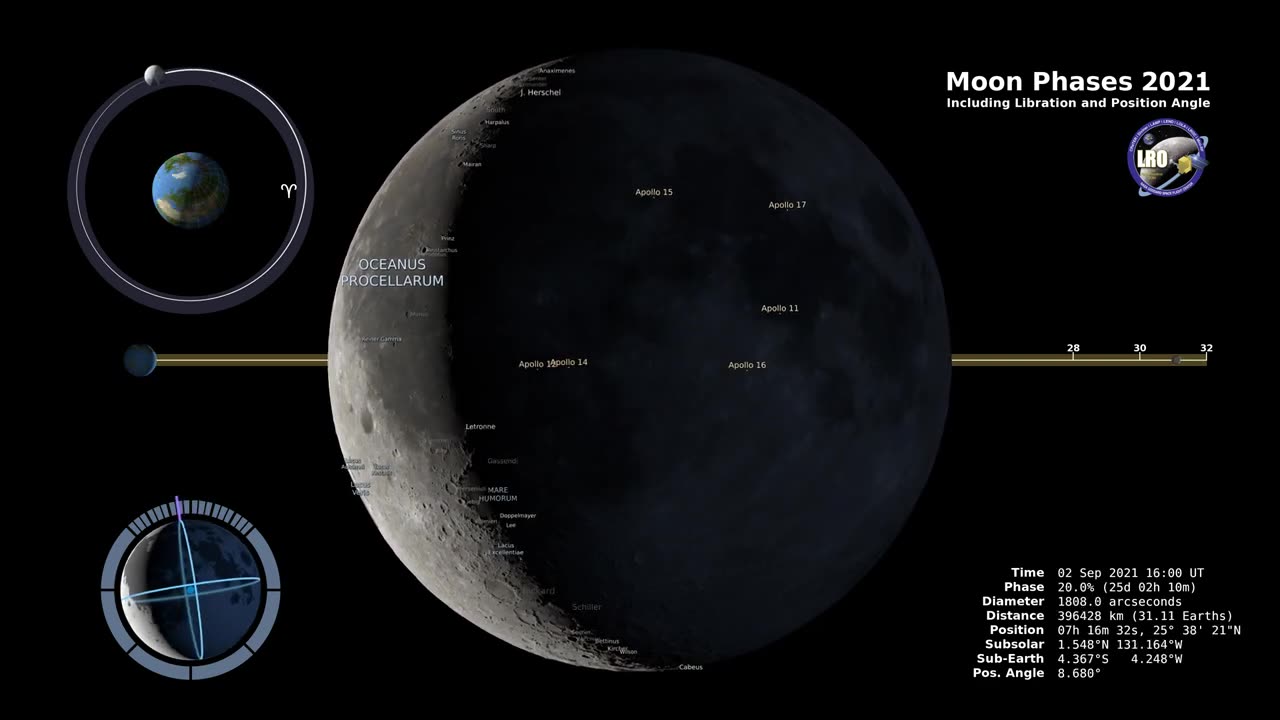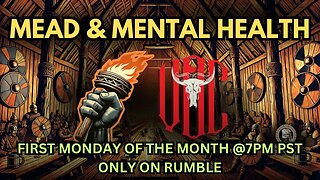Premium Only Content

Dancing with the Moon: The Phases of Luna"
Moon phases refer to the changing appearance of the Moon as viewed from Earth due to its relative positions with respect to the Earth and the Sun. These phases are a result of the Moon's orbit around our planet and its varying illumination by the Sun. There are eight primary moon phases, which can be described as follows:
New Moon: During this phase, the Moon is positioned between the Earth and the Sun. It is not visible from Earth because the side illuminated by the Sun is facing away from us. This marks the beginning of a new lunar cycle.
Waxing Crescent: As the Moon moves slightly away from the Sun, a small, crescent-shaped sliver of the Moon becomes visible in the western sky shortly after sunset. The crescent shape is lit on the right side (in the Northern Hemisphere).
First Quarter (or Waxing Half): In this phase, half of the Moon is illuminated and visible. It occurs roughly one week after the New Moon and is often called the "half-Moon."
Waxing Gibbous: During this phase, more than half of the Moon is illuminated, but it's not yet fully illuminated. The illuminated portion is increasing in size as it approaches the Full Moon.
Full Moon: The Moon is fully illuminated and appears as a complete circle in the night sky. It rises in the east as the Sun sets in the west and is visible throughout the night.
Waning Gibbous: After the Full Moon, the illuminated portion starts to decrease. During the waning gibbous phase, more than half of the Moon is still lit.
Third Quarter (or Waning Half): Half of the Moon is illuminated during this phase, but it is decreasing in size as it moves toward the Last Quarter.
Waning Crescent: Only a small, crescent-shaped sliver of the Moon is illuminated during the waning crescent phase, and it's visible in the eastern sky just before sunrise. The crescent shape is lit on the left side (in the Northern Hemisphere).
These phases repeat in a predictable cycle, taking approximately 29.5 days to complete, which is known as a lunar month or synodic month. Moon phases have been significant in various cultures and calendars throughout history, often influencing religious ceremonies, farming practices, and even folklore. They also impact tides on Earth due to the gravitational pull of the Moon.
-
 2:45:19
2:45:19
TimcastIRL
5 hours agoTrump THREATENS 50% Tariff Increase After Market CHAOS, Tells China BACK OFF
192K92 -
 1:56:17
1:56:17
Badlands Media
11 hours agoBaseless Conspiracies Ep. 127
49K22 -
 1:05:32
1:05:32
Donald Trump Jr.
11 hours agoNews Not Noise, Live with Power the Future's Daniel Turner | TRIGGERED Ep.231
160K80 -
 28:01
28:01
Side Scrollers Podcast
4 hours agoNEW SERIES! Smash JT Has a Full-On Meltdown | Nerd Duel ft. Lady Desiree & You, Me & The Movies
23.2K2 -
 2:13:28
2:13:28
I_Came_With_Fire_Podcast
6 hours agoMEAD & MENTAL HEALTH WITH I CAME WITH FIRE AND VOC!!!
26.4K3 -
 1:10:04
1:10:04
John Crump Live
3 hours ago $1.77 earnedYes I talked To The ATF
23.4K3 -
 LIVE
LIVE
Amish Zaku
6 hours agoVerDanceKey Warzone - Birthday Fun
302 watching -
 LIVE
LIVE
NeoX5
3 hours agoKhazan: The Road Less Taken | Part 5-2 | Rumble Studio | Rumble Gaming
178 watching -
 LIVE
LIVE
TwinGatz
9 hours ago🔴LIVE - He Is Doing His Best | ARMA Reforger
324 watching -
 54:40
54:40
LFA TV
13 hours agoSee God in the Trade War | TRUMPET DAILY 4.7.25 7PM
49K11